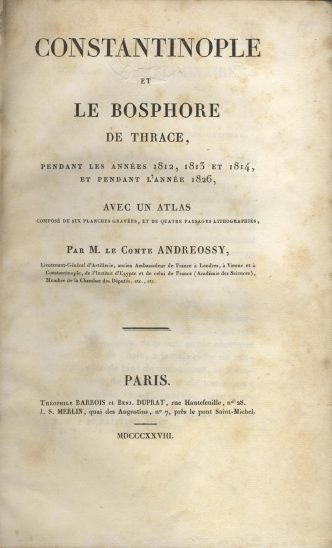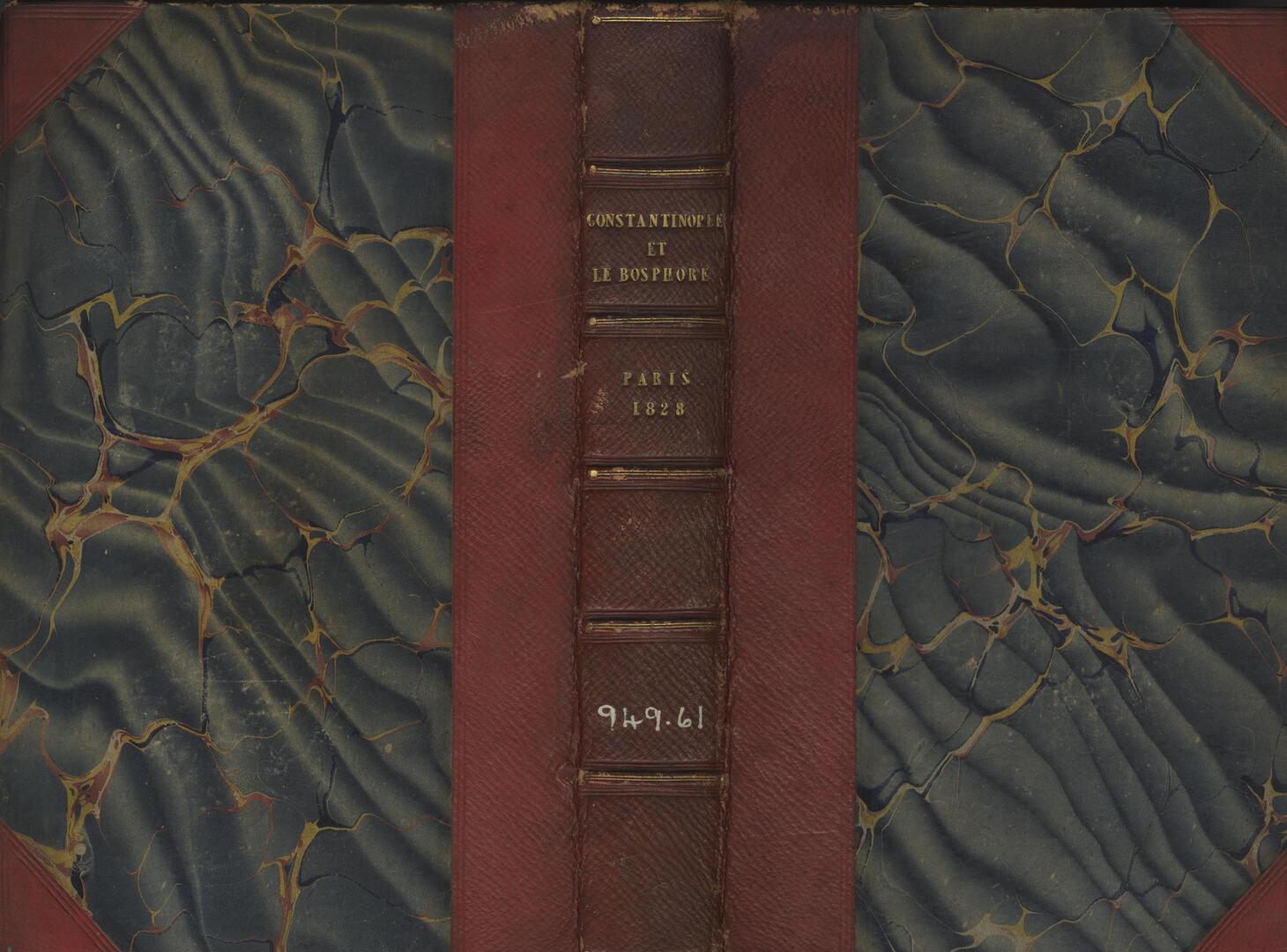Constantinople et le Bosphore de Thrace, pendant les années 1812, 1813 et 1814, et pendant l’année 1826. TWO VOLUMES: TEXT & ATLAS
Andreossy, [Antoine François].
Synopsis
Comte Antoine-François Andréossy (1761– 1828) was a Franco-Italian nobleman, who served as a French Army artillery general, diplomat and parliamentarian. On the outbreak of the Revolution he adopted its principles. At the start of the Revolutionary Wars he held active service on the Rhine in 1794 and in Italy in 1795, and in the campaign of 1796–1797 under Napoleon Bonaparte on engineer duties, commanding the bridging train of the French Army of Italy after June 1796, and fought with distinction at the Battle of the Bridge of Arcole and the Siege of Mantua.
He was promoted to brigadier general in 1798, in which year he accompanied Bonaparte to Egypt. He served in the Egyptian Campaign with distinction. He commanded the French flotilla on the Nile, before serving as Marshal Louis-Alexandre Berthier’s aide-de-camp in Syria and was selected as one of Napoleon’s companions on his return to Europe. In 1812 he was sent by Napoleon as ambassador to The Porte in Constantinople from c. 1811-1814, and he made a second journey to Turkey in 1826, where he carried on the policy initiated by Sébastiani. In 1814 he was recalled by Louis XVIII. Andréossy then retired into private life, until the escape of Napoleon from Elba once again called him forth. He accepted the office of head of the War Department. After the defeat at Waterloo and the abdication of Napoleon, he was one of the five commissioners sent to negotiate with the Coalition powers, on which occasion he gave his consent to the recall of Louis XVII
The plates show waterways and fountains; they also include a view of the Hippodrome and Mosque of Sultan Ahmed.
Volcanic minerals discovered in Istanbul, around the area of the mythic Symplegades or Clashing Rocks
Sections, elevations, plans and drawings of architectural features from aqueducts, with emphasis on subterranean structures.
Map of the Bosporus and its surroundings
Bibliographic references: Atabey 22; Blackmer 33; Graesse I, 122; Weber 154-5; Brunet I, 276; not in Abbey.








